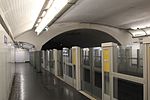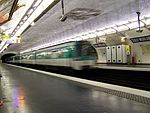Hôtel Saint-Pol
Buildings and structures demolished in the 16th centuryBuildings and structures in the 4th arrondissement of ParisFormer buildings and structures in ParisHôtels particuliers in ParisRoyal residences in France

The Hôtel Saint-Pol was a royal residence begun in 1360 by Charles V of France on the ruins of a building constructed by Louis IX. It was used by Charles V and Charles VI. Located on the Right Bank, to the northwest of the Quartier de l'Arsenal in the 4th arrondissement of Paris, the residence's grounds stretched from the Quai des Célestins to the Rue Saint-Antoine, and from the Rue Saint-Paul to the Rue du Petit-Musc. It fell into disuse and ruin after the death of Isabeau de Bavière in 1435 and was demolished after François I of France sold it in parts at auction in 1543.
Excerpt from the Wikipedia article Hôtel Saint-Pol (License: CC BY-SA 3.0, Authors, Images).Hôtel Saint-Pol
Rue Neuve Saint-Pierre, Paris 4th Arrondissement (Paris)
Geographical coordinates (GPS) Address Nearby Places Show on map
Geographical coordinates (GPS)
| Latitude | Longitude |
|---|---|
| N 48.8541 ° | E 2.3623 ° |
Address
Rue Neuve Saint-Pierre 23
75004 Paris, 4th Arrondissement (Paris)
Ile-de-France, France
Open on Google Maps









